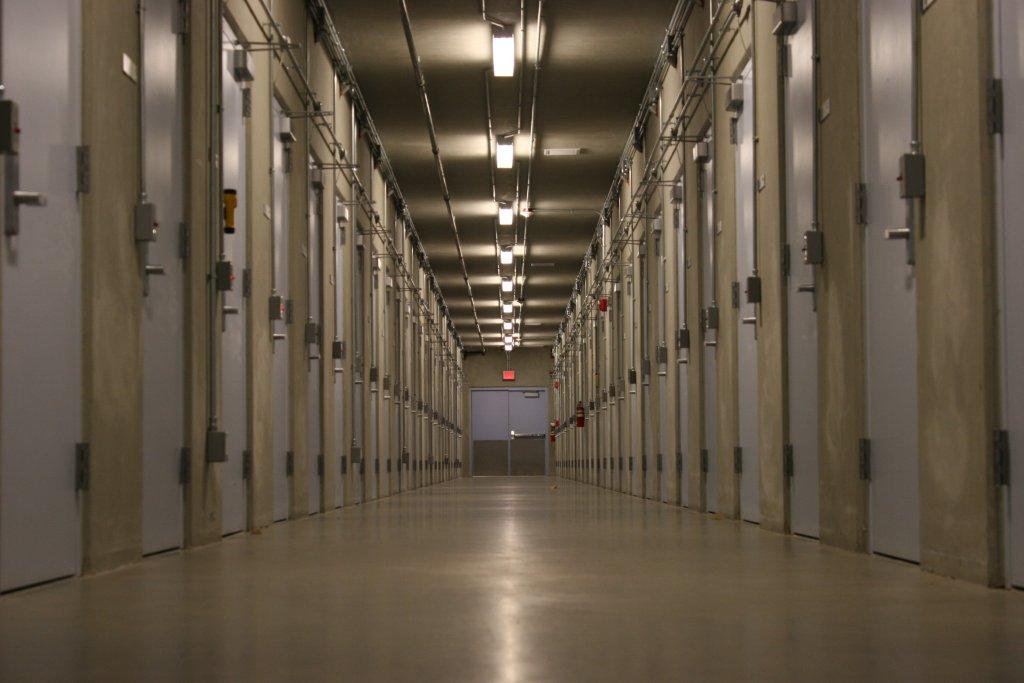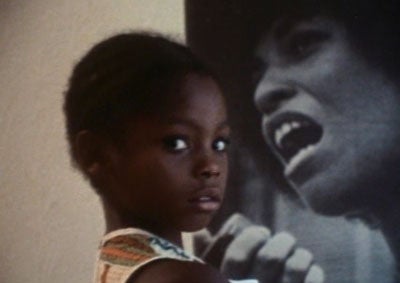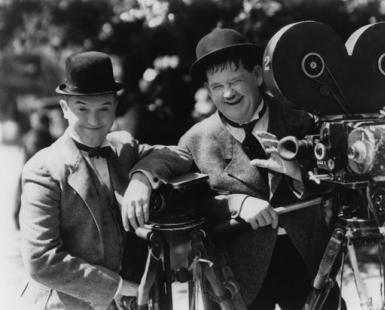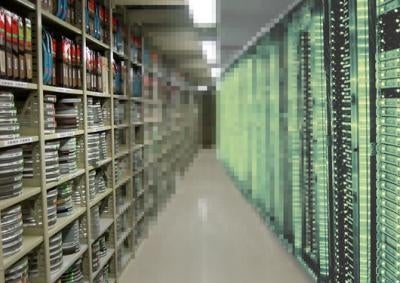On December 1, 2012, I celebrated my fifth anniversary as Director of UCLA Film & Television Archive. Frankly, I’m shocked at how quickly the time has flown by––and find that this anniversary provides a good opportunity to take stock of what has been accomplished so far.
I announced the day I arrived my intention to meet with each and every full-time Archive staff member. This three-month endeavor—with more than 60 staff members—gave me invaluable feedback and perspective that proved integral as I formulated my initial Five Year Plan:
Streamline and Optimize Archive Finances and Financial Procedures
The financial downturn has had a negative fiscal impact on most non-profits, and the Archive is no exception. We’ve combatted this situation with decisive action: hiring skilled accounting staff, instituting rigorous and centralized financial controls, and streamlining all financial procedures.
By scrutinizing the Archive’s entire financial landscape—from the smallest expense to the most overarching guideline—we’ve been able to maximize the resources at hand and eliminate unnecessary expenditures and inefficiencies. I’m proud to say that even in these challenging times, the Archive has not only been able to fulfill its cultural mission, but has been able to expand its horizons and thrive—all while operating debt-free.
Increase Earned Income and Other Revenue Streams
 In April 2008, the Archive occupied its new state-of-the-art nitrate vaults in Santa Clarita, built in partnership with The Packard Humanities Institute. The new vaults provided an opportunity for the Archive to mitigate our hefty operating costs by initiating storage agreements with the major motion picture studios. This much-needed offset has helped the Archive weather the now almost annual UC budget cuts. Other sources of earned income have also been ramped up, most notably by increasing sales of stock footage through our Media Licensing Department to new and returning customers, including multiple PBS productions by filmmaker Ken Burns and the award-winning HBO project Hemingway & Gellhorn (2012).
In April 2008, the Archive occupied its new state-of-the-art nitrate vaults in Santa Clarita, built in partnership with The Packard Humanities Institute. The new vaults provided an opportunity for the Archive to mitigate our hefty operating costs by initiating storage agreements with the major motion picture studios. This much-needed offset has helped the Archive weather the now almost annual UC budget cuts. Other sources of earned income have also been ramped up, most notably by increasing sales of stock footage through our Media Licensing Department to new and returning customers, including multiple PBS productions by filmmaker Ken Burns and the award-winning HBO project Hemingway & Gellhorn (2012).
Grants, donations and gifts are usually long-term efforts in even the best of times, but the Archive has already made significant headway in increasing this revenue stream as well. UCLA approved the hiring of the Archive’s first ever Director of Development in 2009 and we have since thankfully welcomed a number of new major donors, including Jeff Joseph, Barbara and Marty Cooper, and Glenn Padnick. Grant funding has also grown, with our groundbreaking “L.A. Rebellion” research and film preservation initiative spurring almost $200,000 from a number of foundations previously unassociated with the Archive, including the the Getty Foundation, the Andy Warhol Foundation, and the California Humanities Council.
Reorganize and Revitalize the Archive’s Staffing Structure

It is no small challenge to staff communication, effectiveness and cross-pollination that we are currently spread over seven physical locations. But in early 2010, Archive senior staff completed a strategic planning process that identified areas for improvement and invested us all in a unified course of action. The Archive now works together more efficiently and productively than ever, as was dramatically demonstrated during our recent “L.A. Rebellion” project, which involved literally every single person on staff, down to our part-time driver.
Update the Archive’s Online and Digital Presence
 We live in an increasingly online universe, but when I arrived, the Archive’s website had not been significantly modified since 1996, and was wholly text based. Thanks to a major donation from the Carol and Ken Schultz Family Foundation and other initiatives, a new Archive website was introduced in March 2011. The new site was conceptualized as a destination for repeated visits, featuring frequent updates and offering richer content, including: photos; links to articles and reviews; films and film clips; blogs; movie trailers; research areas; and databases. Traffic to the Archive’s new site has tripled, facilitating outreach to thousands of people across the globe.
We live in an increasingly online universe, but when I arrived, the Archive’s website had not been significantly modified since 1996, and was wholly text based. Thanks to a major donation from the Carol and Ken Schultz Family Foundation and other initiatives, a new Archive website was introduced in March 2011. The new site was conceptualized as a destination for repeated visits, featuring frequent updates and offering richer content, including: photos; links to articles and reviews; films and film clips; blogs; movie trailers; research areas; and databases. Traffic to the Archive’s new site has tripled, facilitating outreach to thousands of people across the globe.

In related digital news, UCLA Film & Television Archive and the UCLA Library partnered in April 2010 to launch a special web site of curated silent animation. The 11 films can be watched online or downloaded for free and viewers can choose between tracks of expert commentary, traditional piano accompaniment or specially commissioned music scores.
The Archive has also rapidly expanded its social media presence and has used Twitter and Facebook to help raise more than $158,000 in donations for our ongoing Laurel & Hardy film preservation initiative.
And looking ahead, within the next year we plan to have over 600 hours of historic Hearst Metrotone Newsreels online for research and viewing.
Heighten the Archive’s Profile in the U.S. and Beyond
We’ve accomplished much in the non-digital realm, as well, in our goal to bring the Archive to the world. The Archive’s profile across North America has been enhanced by a series of well-regarded traveling tours of our Los Angeles-based film exhibitions. In the last two years we’ve toured presentations of “L.A. Rebellion: Creating A New Black Cinema,” “Universal Pictures: Celebrating 100 Years” and the “UCLA Festival of Preservation.”
 We also partnered with Turner Classic Movies in Fall 2010 for a special on-air tribute to the film restoration work of the Archive, showcasing such titles as Topper (1937), Way Out West (1938), The Secret Beyond the Door (1948), The Prowler (1951) and Shadows (1960).
We also partnered with Turner Classic Movies in Fall 2010 for a special on-air tribute to the film restoration work of the Archive, showcasing such titles as Topper (1937), Way Out West (1938), The Secret Beyond the Door (1948), The Prowler (1951) and Shadows (1960).
2010 brought another important partnership, as UCLA Film & Television Archive, UCLA Moving Image Archive Studies, INA (Institut National de l'Audiovisuel, France) and Ina SUP European Centre for Research, Training and Education on Digital Media joined to present the landmark symposium “Reimagining the Archive: Remapping and Remixing Traditional Models in the Digital Era.” The groundbreaking gathering at UCLA featured presentations by speakers from three continents and examined digitality and the evolution of archival practice, technology and research.
In addition, in May 2011, the Archive, Los Angeles Filmforum and New York University presented the “Celebrating Orphan Films” symposium at UCLA. The two-day event featured over 25 speakers from a diverse slate of academic and archival institutions from across the country and also screened an impressive array of over 40 seldom-seen works.
Even in the face of mounting costs, the Archive maintains one of the strongest archival print loan programs in North America and has recently brought aboard important U.S. academic institutions including Harvard University, Yale University and the University of Wisconsin.
-------------------------
 Challenges remain. Our vital cataloguing systems, like those of many other major archives, are out of date and do not meet our present—never mind future—needs. The transition from analog materials and processes to digital continues to be a major financial and organizational challenge, given the need for new hardware and the restructuring of workflows. Fundraising in the present fiscal climate of the nation also poses ongoing issues.
Challenges remain. Our vital cataloguing systems, like those of many other major archives, are out of date and do not meet our present—never mind future—needs. The transition from analog materials and processes to digital continues to be a major financial and organizational challenge, given the need for new hardware and the restructuring of workflows. Fundraising in the present fiscal climate of the nation also poses ongoing issues.
However, I think my staff would agree that the Archive is a very different and in many ways improved institution than it was five years ago. We have much to be proud of and we continue to push for excellence on every front.
Personally, I’m looking forward to the next five years.






 Mobile Navigation
Mobile Navigation

